How to choose the best air purifier? We look at several different factors to rank air purifiers. Let’s start with airflow.
The Airflow
An air purifier’s airflow is the volume of air it can process per unit time. For example, an air purifier with an airflow of 250 CFM takes 250 cubic feet of air and passes it through all of its filters each minute. This chart lists the airflow for each of the air purifiers we’ve tested so far. Airflow is important because it largely determines an air purifier’s area of coverage. The higher the airflow, the more powerful the air purifier, and the greater its area of coverage.
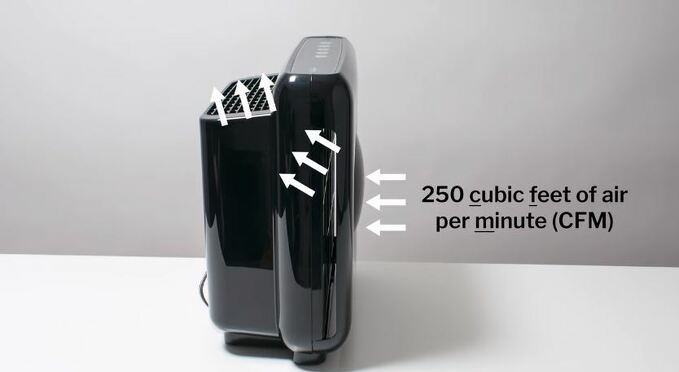
In this chart, we’ve added the recommended square footage for each of the air purifiers we’ve tested. We make size recommendations pretty aggressively. A 250 CFM air purifier, for example, filters all of the air in a 300 square foot room with eight-foot ceilings six times in one hour. This much filtration is absolutely necessary for some applications and makes for a better user experience. Even when it’s not neat.
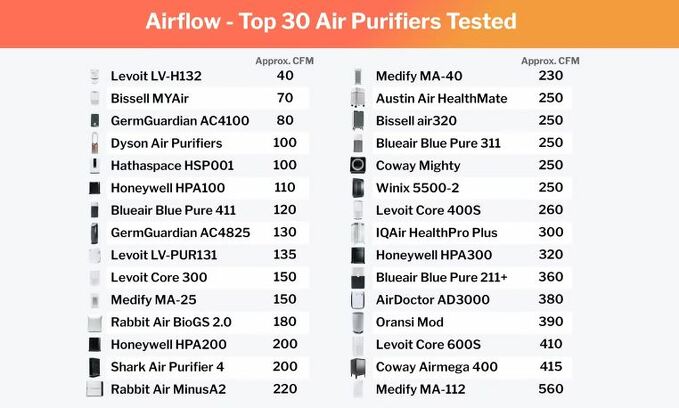

Particle filter type
The second major factor we look at to rank air purifiers is particle filter type. Here we really like air purifiers with a true HEPA filter, a filter that removes 99.97% of particles that travel through it. Many air purifier manufacturers specify HEPA filter efficiency in terms of particle size, stating that HEPA filters remove 99.97% of particles 0.3 microns or larger that travel through them.

This allows certain other manufacturers to market their air purifiers as having a special type of HEPA filter that can filter particles smaller than 0.3 microns with high efficiency.
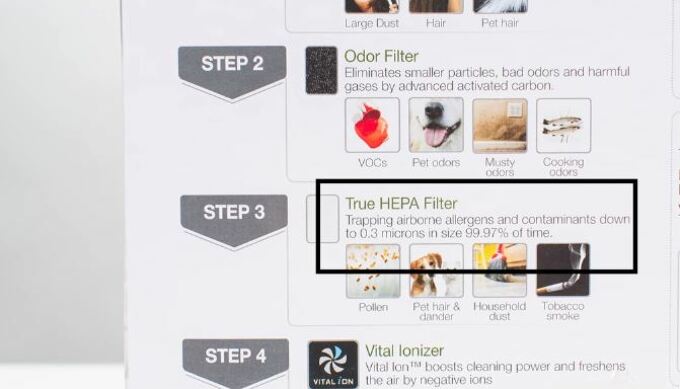
The truth is that even a standard HEPA filter is also able to filter particles smaller than 0.3 microns with very high efficiency. Filtration efficiency for a HEPA filter is only given in terms of 0.3 microns because that is the most difficult-sized particle to filter. Particles larger than 0.3 microns are easier to filter, but so are particles smaller than 0.3 microns. We talk about this topic in great detail in a separate guide that we wrote about HEPA filters.
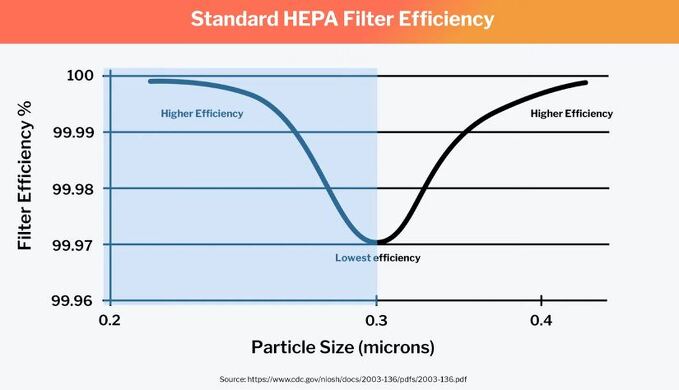
We’ll link to that guide in the description of this rank air purifiers article, but suffice it to say here that a standard HEPA filter is sufficient and works very well to filter particles of all sizes. HEPA is the gold standard for particle filtration in the industry. It’s the same type of particle filter used in hospitals and the same type of particle filter we recommend here for a residential air purifier.
Gas filter type
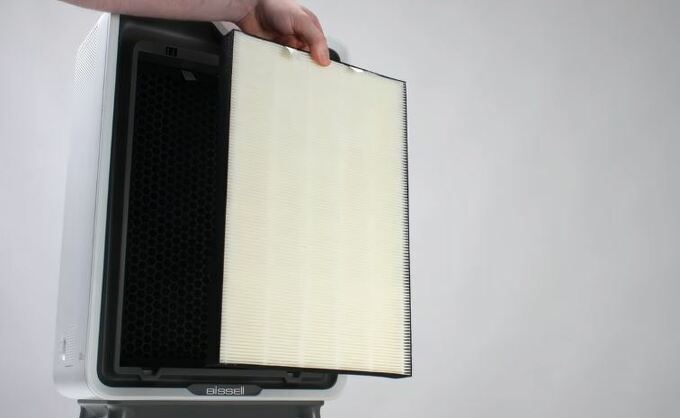
The next ranking factor is gas filter type. An air purifier’s particle filter, usually a HEPA filter, only removes particles like dust and pollen from the air. An air purifier’s gas filter removes unwanted gases like harmful VOCs and odors from the air. The industry’s standard for gas filtration is an activated carbon filter. There are two types of carbon filters: those that are composed of carbon pellets and those that are composed of a thin fibrous material that’s only coated with carbon.
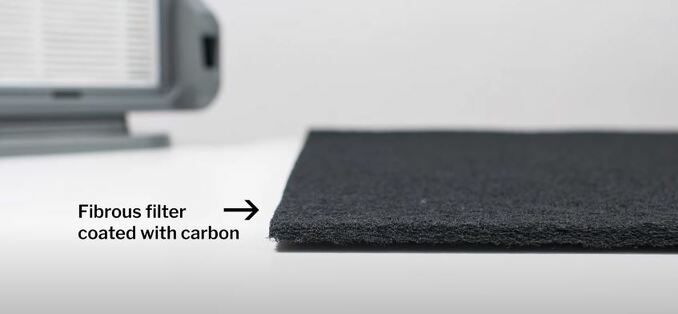
Pellet-based filters generally provide more surface area for the absorption of unwanted gases, so they filter these gases better and last longer. If an air purifier has this type of carbon filter, it’s a strong positive for that particular model.

Fibrous filters generally provide much less surface area for the adsorption of unwanted gases, so they don’t filter them as well and don’t last as long. If an air purifier has this type of carbon filter, we generally consider it to be a negative for that particular model.
Pre-filter type
Another important ranking factor is pre-filter type. Most air purifiers have some type of pre-filter, a filter that’s positioned in front of its HEPA filter that catches larger particles. Without a pre-filter, HEPA filters would saturate with larger particles very quickly and need to be replaced much more frequently. A good-quality pre-filter extends the life of the HEPA filter and greatly reduces long-term filter costs. The best-quality pre-filters are separate filters made of a high-quality mesh or fabric. They filter well and are easy to clean.
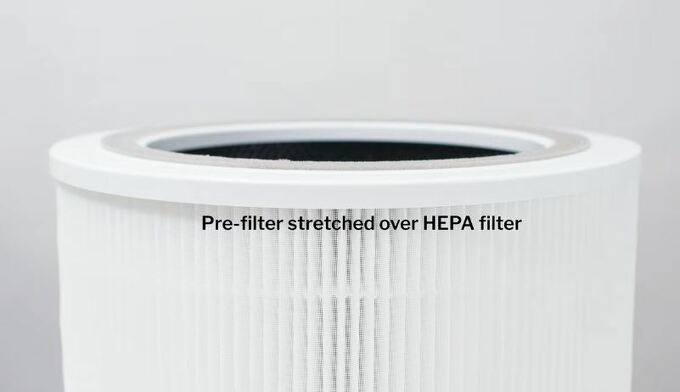
Many air purifiers use a lower-quality pre-filter that’s attached to a combination filter. It’s usually stretched right over the unit’s HEPA filter. Because of its proximity to the HEPA filter, vacuuming this type of pre-filter can damage the HEPA filter. You could also wipe or dust off this type of filter, but doing so won’t clean it as well and can generate a lot of airborne dust.
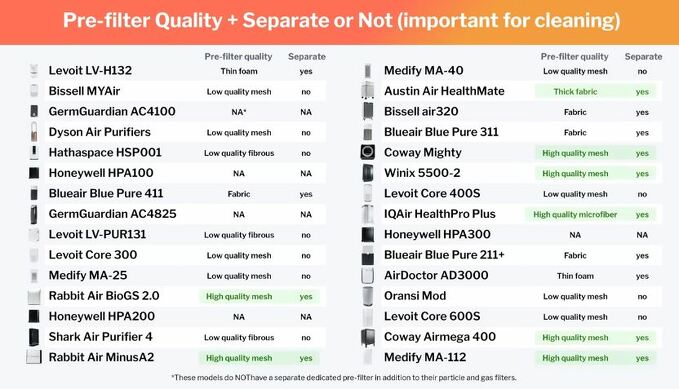
Either way, this type of pre-filter encourages more frequent HEPA filter replacement, which increases the long-term cost of ownership. A separate, high-quality pre-filter makes for less frequent HEPA filter replacement and lower long-term filter cost.
Filter order
Filter order is our fifth ranking factor and also has a direct impact on filter life and, therefore, long-term cost of ownership. Placing the air purifier’s carbon filter in front of its HEPA filter provides an extra line of defense against large particles. This further maximizes the life of the air purifier’s most expensive and important filter: its HEPA filter. You don’t get the same benefit when placing the carbon filter after the HEPA filter.
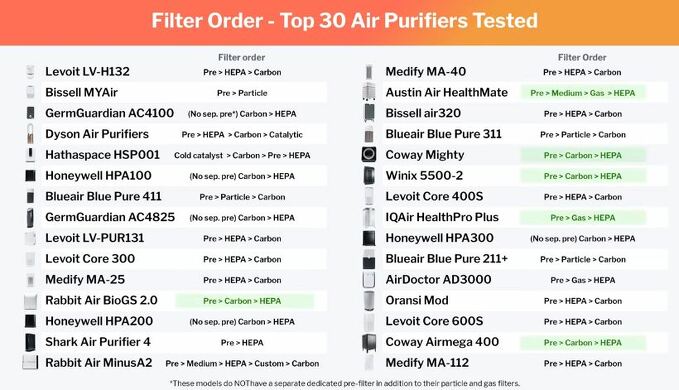
Interestingly, most air purifiers with a separate, high-quality pre-filter also have their carbon filter positioned in front of their HEPA filter. This indicates that maximizing filter life was a priority in the overall design of these models. Most air purifiers that have a low-quality pre-filter tend to also have their carbon filter positioned after their HEPA filter. This indicates that maximizing filter life was not a priority in the overall design of these models.
Top three models

Winix 5500-2: The Top Choice for Most
Taking all of these ranking factors into account, in addition to energy efficiency, noise output, and overall value, we still recommend the Winix 5500-2 as the best air purifier for most people. The 5500-2 offers very good airflow at 250 CFM and has sufficient airflow for spaces up to 300 square feet. It’s cheap enough so that you can easily scale up with additional units for spaces much larger than 300 square feet. The 5500-2 also offers excellent particle filtration with a true HEPA filter and very good gas filtration with a pellet-based carbon filter.
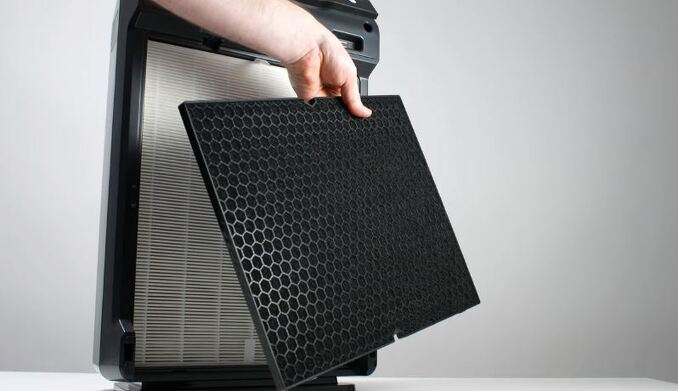
It has a separate, high-quality mesh pre-filter and has its filters in the proper order to maximize the life of its HEPA filter. It’s energy-efficient, can run very quietly, and is also a terrific overall value. It offers very good airflow and filtration quality for the price.
Read more: Winix 5500-2 Air Purifier Review: What We Like & Dislike
Coway Mighty: A Worthy Contender
Second in our rankings is the Coway Mighty. The Mighty is also a 250 CFM air purifier and has the same area of coverage as the Winix 5500-2. Like the Winix, it offers excellent particle filtration with a true HEPA filter. However, its carbon gas filter is a thin, fibrous filter that is only coated with carbon, so it does not filter unwanted gases like odors as well as the top-rated Winix.
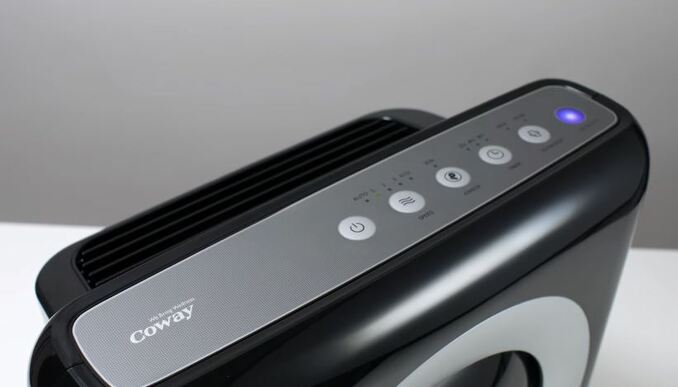
Otherwise, the Coway still has a separate, high-quality mesh pre-filter and has its filters in the proper order to maximize the life of its HEPA filter. It’s also energy-efficient, can run very quietly, and is a good overall value. Like the Winix, all in all, we prefer the Winix over the Coway because it’s usually cheaper and offers better gas filtration, but the Coway is still a very good air purifier and very much deserving of its spot in our rankings.
Austin Air HealthMate: Elevating Gas Filtration
Third in our rankings is a good upgrade option compared to the top two options. The Austin Air HealthMate is also a 250 CFM air purifier with similar coverage to our top two picks. It also has a true HEPA filter for particle filtration like our top two picks. What makes it unique is its exceptional gas filtration. The Winix, our top pick, does offer very good gas filtration, certainly better than that of the Coway. But the Austin Air HealthMate takes things to an entirely different level.

The HealthMate’s gas filter contains 15 pounds of gas filtration media. That’s more than 10 times as much gas filtration media as you’ll find in most other air purifiers on the market, including the top-rated Winix. This much media allows the HealthMate to remove unwanted gases much faster than most other air purifiers. This much media also takes much longer to saturate than filter media in most other gas filters, so the HealthMate’s filter doesn’t need to be replaced nearly as often as most other gas filters.
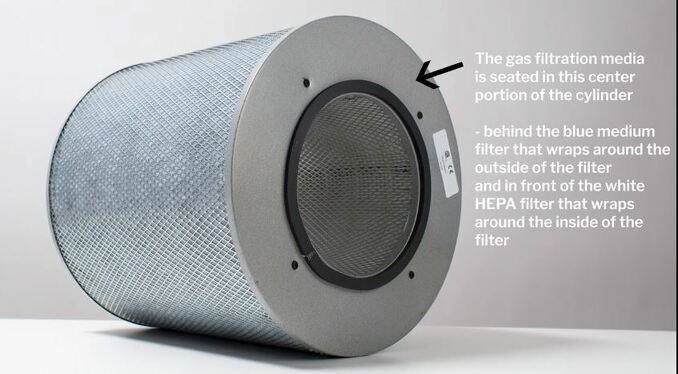
The HealthMate’s filter also contains zeolite in addition to carbon pellets. Most other air purifiers, including the Winix and Coway, have gas filters that only contain carbon. The addition of zeolite allows the HealthMate’s gas filter to remove a greater number of chemicals than it would be able to remove if it only contained carbon.
The HealthMate does have two big negatives. First, it has well below average energy efficiency on all of its fan speeds. Second, it’s very expensive. It normally retails for upwards of six, even seven hundred dollars. This makes the Winix and Coway a far better value for particle filtration. But if gas filtration, that is, removing harmful VOCs and odors, is especially important to you and you have the budget for it, we recommend the Austin.
So to recap, the Winix 5500-2 is the best air purifier overall, the Coway Mighty is the best alternative to the Winix, and the Austin Air HealthMate is the best upgrade option if unwanted gas filtration is especially important to you.